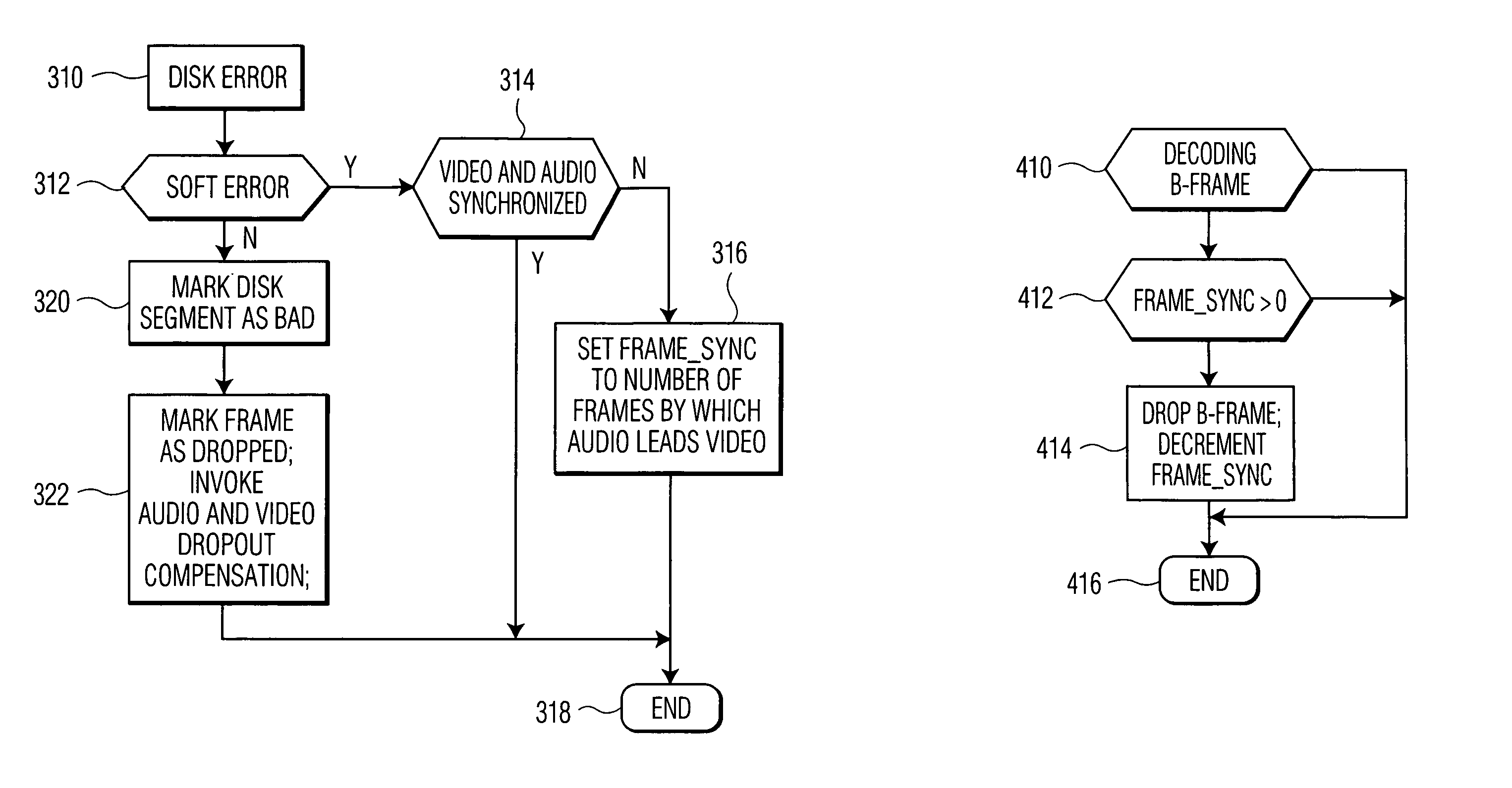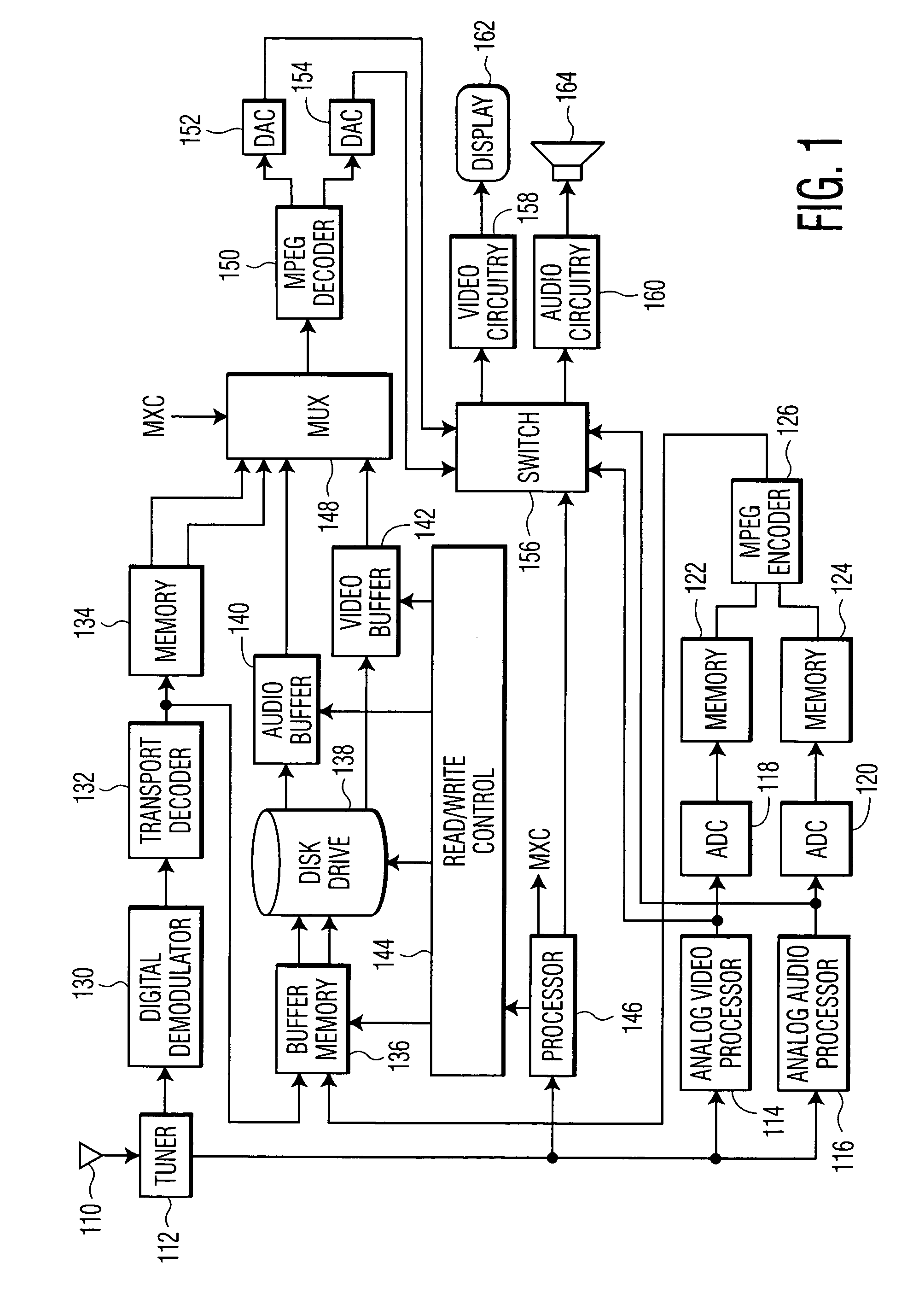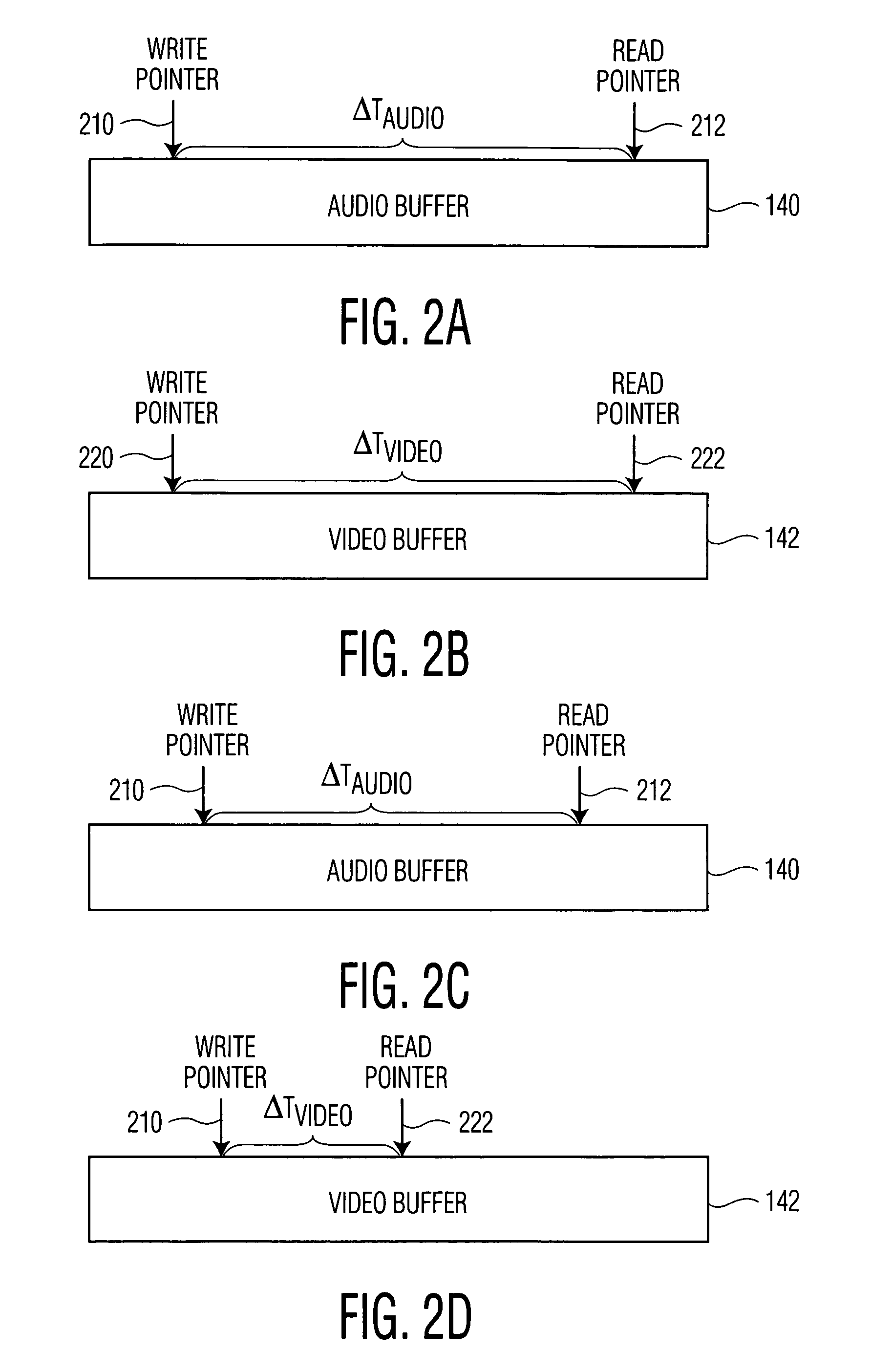Method and apparatus for concealing disk soft errors in recorded digital television signals
a technology of digital television signal and soft error, which is applied in the field of apparatus and a method for concealing soft errors in recorded digital television signals, can solve the problems of disc drives used in these systems being more expensive than comparable disk drives used, errors can occur, and digital television recorders cannot tolerate disk soft errors. to achieve the effect of minimizing disruption
- Summary
- Abstract
- Description
- Claims
- Application Information
AI Technical Summary
Benefits of technology
Problems solved by technology
Method used
Image
Examples
first embodiment
[0033]In the invention, the processor 146 inhibits the video buffer 142 from providing data to the MPEG decoder 150 as soon as the soft error is detected. The processor 146 then signals the decoder 150 to repeat the frame that is currently being displayed until the disk drive 138 has recovered from the soft error. By stopping the decoding of video packets while continuing to decode audio packets, this embodiment of the invention, loses synchronization between the audio and video packets each time a soft error occurs. To resynchronize the video and audio portions of the program, the processor 146 controls the video buffer 142 via the read write control circuitry 144 to drop one or more subsequent B frames or P frames that are not used as a reference frame for any other frame. The loss of this data advances the video portion of the program relative to the audio program, re-synchronizing the video buffer with the audio buffer.
[0034]Typically, the disk drive is able to read data from th...
second embodiment
[0035]According to the invention, the video buffer 142 includes a sufficient amount of memory to hold more than one image frame (e.g. three frames). When a soft error occurs, the retry operation recovers the missed data and stores it into the buffer 142. Because the buffer includes sufficient memory to continue to provide video information even during the soft error recovery, the video signal is not interrupted when the soft error occurs. If, however, the soft error continues after all of the available data in the buffer has been read, the video portion of the program may lose synchronization with the audio program. The buffers are then re-synchronized as described above.
third embodiment
[0036]In the invention, the delay in providing data from the disk drive causes the video buffer 142 to underflow. When the underflow occurs, the MPEG decoder 150 activates its dropout compensation algorithms to display the current video image until valid data is once again available from the video buffer 142. If, for example, the underflow occurs when video buffer 142 is providing I-frame data to the MPEG decoder 150, the MPEG decoder 150 may display the current image for several frame intervals until the next I-frame is available to be decoded. The processor 146 resynchronizes the audio and video data streams by selectively dropping B and / or P frames, as described above.
[0037]FIGS. 2a through 2f are video buffer diagrams that illustrate the operation of the exemplary embodiment of the invention when a soft error occurs. FIGS. 2a and 2b show the audio buffer 140 and video buffer 142 before the occurrence of the soft error. Although they are shown as linear buffers, in the exemplary ...
PUM
 Login to View More
Login to View More Abstract
Description
Claims
Application Information
 Login to View More
Login to View More - R&D
- Intellectual Property
- Life Sciences
- Materials
- Tech Scout
- Unparalleled Data Quality
- Higher Quality Content
- 60% Fewer Hallucinations
Browse by: Latest US Patents, China's latest patents, Technical Efficacy Thesaurus, Application Domain, Technology Topic, Popular Technical Reports.
© 2025 PatSnap. All rights reserved.Legal|Privacy policy|Modern Slavery Act Transparency Statement|Sitemap|About US| Contact US: help@patsnap.com



